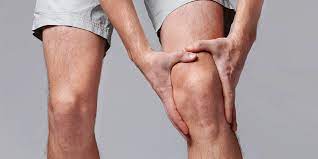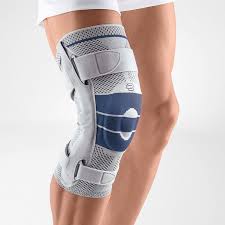First things first – what is osteoarthritis? Osteoarthritis (OA) is known as a degenerative or a “wear and tear” disease which affects the joints of our body. With OA, the smooth cartilage within a joint begins to break down becoming rough, as well as changes to the underlying bone. You can think of OA as an orange – the peel is the healthy cartilage that protects the underlying bone or “fruit”. As the protective peel begins to thin and wear out, it exposes the bone or “fruit”. These changes usually develop slowly over time, and can present in many ways such as pain, stiffness and swelling in the affected joint.
What are common symptoms of knee osteoarthritis?

Although knee pain, stiffness and swelling can be a result of many different things, it may be likely you are suffering from knee OA if you have the previous as well as all or some of:
- Morning knee stiffness that lasts less than 30 minutes
- Knee stiffness after sitting but potentially gets better with movement
- clicking noises in the knee
- over the age of 50
- boney tenderness
- knee feeling unstable
- swelling, redness or warmth surrounding your knee
How is osteoarthritis diagnosed?
It may be recommended by your physiotherapist or your family physician to get an x-ray, MRI, blood test or a joint fluid test to determine if you have knee OA and the degree of it. It is important to note that many people live their lives symptom free while having degenerative changes in their knees. A recent study by Culvenor et al., 2019 found that approximately 43% of individuals over 40 years of age had signs of knee OA but had no knee pain. Therefore, indicating that x-rays and imaging are one small piece of the puzzle, and should not drive treatment options!
What are some tips you can start to use to make your knee feel better?
- Maintain a healthy weight
- Get plenty of rest
- Limit high impact activities such as jumping or running
- Use of ice or heat
How can a physiotherapist help?
For those of you who are dealing with knee pain from OA, treatment provided by a physiotherapist may help to relieve your pain. The treatment may involve:
1.Hands on manual therapy: passive stretching and joint mobilizations may help to reduce your pain and increase the mobility of your knee.
2.Use of modalities: For example, the use of acupuncture may help to reduce the inflammation surrounding your knee, to provide you with relief and ability to return to the activities you enjoy.
- Home exercise program: An individualized exercise program created by a physiotherapist may include cycling, stretching, and strengthening for the affected knee. Not sure how much and what types of exercises may help? Are you concerned that exercise would worsen your knee? Your physiotherapist will be able to help start you off with an appropriate amount of exercise that is tolerable for your current level and help to progress these exercises so that you can keep enjoying the activities that are important to you.
- Knee brace: A knee brace may also be indicated for you to reduce your knee pain and return to the activities you love. There are many different types of knee braces, which can make it a confusing task on which one is right for you. To make it easier for you and narrow it down, head to here for a great selection of knee braces.

Other potential treatment options include obtaining a knee injection, which may help to improve your symptoms. Also, a knee replacement may be necessary if the damage is severe enough where it is affecting your quality of life.
There are pros and cons to the above approaches. Don’t let knee pain affect your life, book an appointment with one of our physiotherapists in Alliston or Tottenham to assess and discuss potential treatments that are best for you!
Culvenor, A.G., Øiestad, B.E., Hart, H.F., Stefanik, J.J., Guermazi, A. and Crossley, K.M., 2019. Prevalence of knee osteoarthritis features on magnetic resonance imaging in asymptomatic uninjured adults: a systematic review and meta-analysis. British journal of sports medicine, 53(20), pp.1268-1278.
